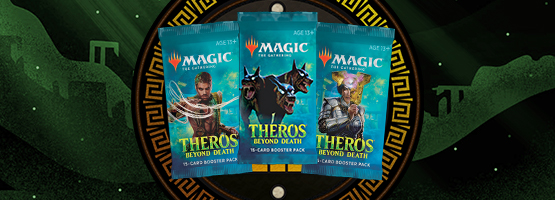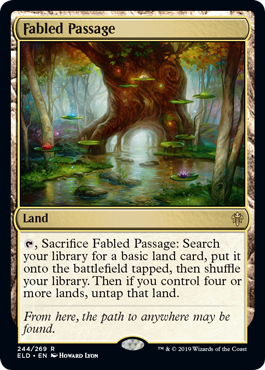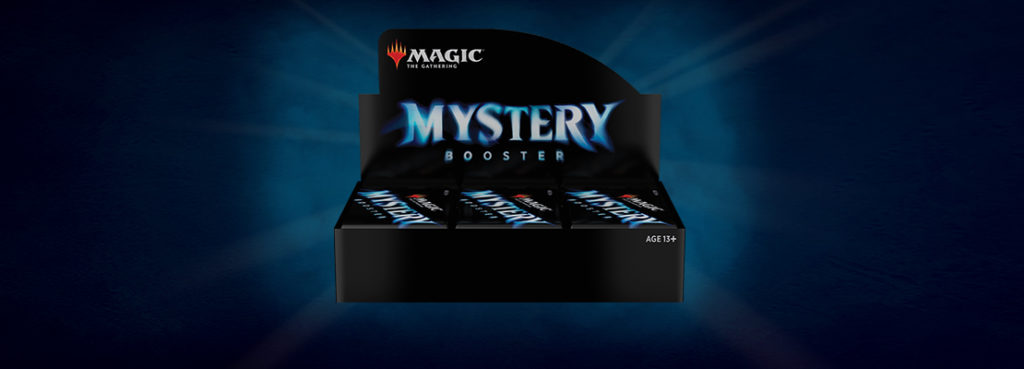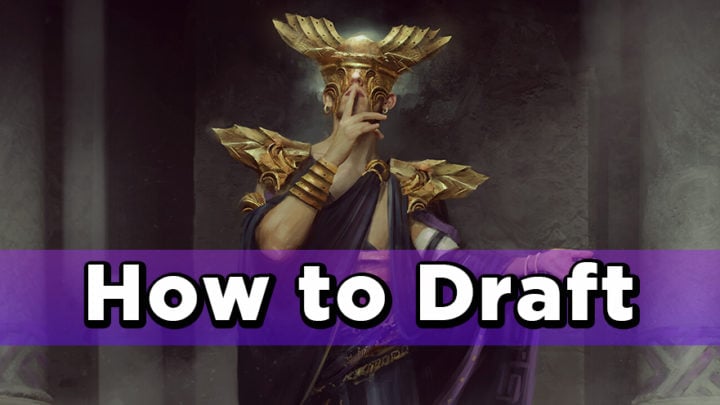Drafting is one of the most popular forms of Magic: The Gathering, and with one of the lowest barriers to entry. For this reason, draft is ideal for new Magic players or players who are returning to the game after a break. If this sounds like you, we’re here to walk you through the basics of how to draft and answer your burning questions.
What is Draft?
Draft is a format where you build a deck on the fly by “drafting” cards from booster packs. Even if you’ve never played Magic before, it’s easy to learn the basics of drafting. If you’ve ever participated in a fantasy sports draft or played card games like Seven Wonders or Sushi Go, the concept is the same: pick cards one by one and use them to support an overall strategy.
Here’s how drafting works in Magic:
Each player in the draft starts with three sealed booster packs.

In the first draft round, all players open one of their booster packs at the same time, look at the cards, and select one without showing the other players. They then pass the remaining cards in the pack to the player on their left and pick up a new pack that the player on their right has passed to them. They’ll continue to take a card from each new pack and pass the remaining cards until there are no cards left.
Once the first pack is complete, players will open the second pack and begin another round of drafting cards just as before. But, this time, they’ll pass their cards to the player on their right and receive cards from the player on their left.
When it’s time to draft the third pack, the players pass to the left again.
When the process is complete, you’ll have a pool of cards that you can use to build a 40-card deck. These cards are yours to keep; you can add them to your collection after you’ve played a few rounds of Magic with your draft deck.
To summarize:
- Left
- Right
- Left again
What Cards Should You Draft?
It’s easy to learn how to draft, but figuring out which cards to pick is a skill that can take years to master. Here are a few questions you should ask yourself as you draft.
What’s the best card in this pack?
At the beginning of the draft, it’s best to pick the most powerful cards and go from there.
What colors have you drafted so far?
Most strategies in recent Magic draft environments are focused in two-color pairs. If you focus on drafting two colors, you’ll have a cohesive deck full of cards that are meant to be played together.
What colors or strategies are other players NOT drafting?
If several players at a draft table want to play the same strategy, they’ll inevitably find that there aren’t enough good cards to go around. When you draft, it’s often best to identify the strategy that the players around you AREN’T drafting; if there are good cards circulating that the other players don’t want, they’ll have little choice but to pass them to you! If your fellow drafters are passing you strong cards in a specific color, you’ll be wise to start taking them.
How good are your creatures?
Drafts are largely won and lost with creatures, so you’ll want the best ones you can find. Choose creatures with useful keyword abilities and a good size-to-mana-cost ratio. In draft, a creature whose power and/or toughness is greater than or equal to its converted mana cost is a good baseline. (This is commonly known as “The Vanilla Test”; a “vanilla” creature is a creature with no abilities that has power and toughness equal to its converted mana cost, e.g. a 3/3 for three mana.)

Do your spells affect the board?
If your opponents are trying to win the game with creatures, you should include spells that will help you deal with them. “Removal” spells (spells that destroy or otherwise hamper creatures) are at a premium, as are spells that will give your creatures an edge in combat.
Do you have spells at different mana costs?
You’ll want to make sure you have something to do on each turn of the game, so drafting spells at different mana costs is key. Almost all your spells should fall in the 2-5-mana range, with the average cost around 3-4.
What effects are good in the environment?
Learning your draft environment takes time, but we have some resources that may be of use to you. Check out our draft guides for recent Magic sets.
Frequently Asked Draft Questions
How many players do you need for a draft?
Eight players is the generally-accepted ideal for drafting, but we’ve seen drafts work with as few as six or as many as ten players.
What’s the best ratio of lands to spells in a draft deck?
Most draft decks consist of 23 spells and 17 lands. This can vary based on the draft environment and the converted mana costs of your spells.
How highly should I value non-basic lands in draft?
It depends on what the land does and how many colors you’re playing! Most two-color decks won’t need non-basic lands unless they have useful effects, such as the ability to draw cards or generate creature tokens. A deck of three or more colors will almost certainly need non-basic lands that generate different colors of mana.

Draft Variants
Draft is such a popular and accessible format that many players have put their own spin on it over the years. Once you master the basics of drafting, try these drafting variants.
Cube Draft
A Cube is a custom set of cards that players curate for drafting. As its name implies, a Cube consists of a minimum of 360 cards (three 15-card packs each for eight players), but it can be larger.
If you’d like to build your own Cube, Card Kingdom’s Starter Cube is a great place to…well, start.
Chaos Draft
In most booster drafts, players draft cards from packs of the same set. But some players like to spice things up with a Chaos Draft. In Chaos Draft, players chip in packs from various Magic sets to create a unique draft environment.
While not all Magic sets play nicely with one another, you can find unexpected synergies between different sets with a bit of careful planning.
If you want to get a taste of what Chaos Draft can offer, check out Mystery Booster!

Winston Draft
Want to draft, but only have one other person to play with? Try a Winston Draft!
We cover the basics in this article.
Back-Draft
Back-Draft is perhaps the wackiest draft format we’ve seen. Players attempt to draft the worst pool of cards possible, then swap pools with other players. Everyone has to figure out how to turn their lemons into lemonade, and the results are often hilarious.
Have any additional questions about draft that we didn’t cover here? Let us know on Twitter at @Card_Kingdom!

